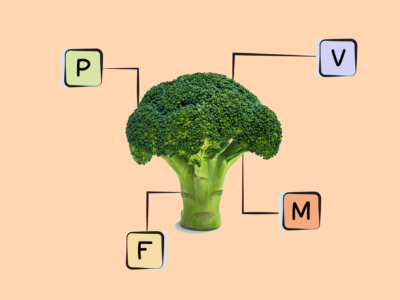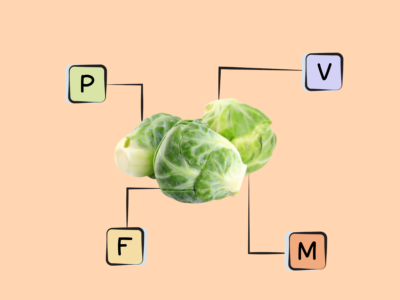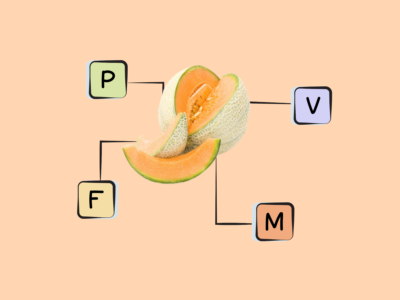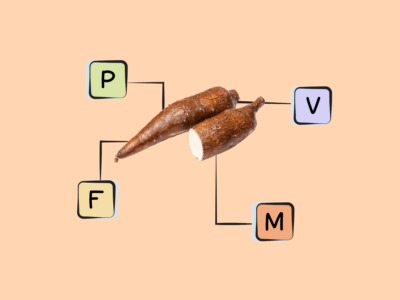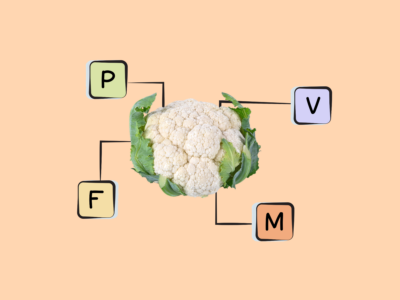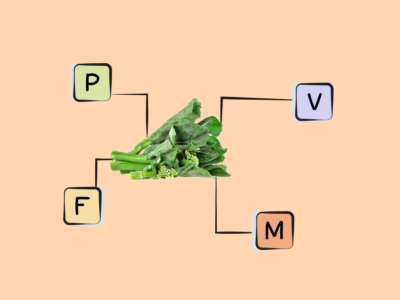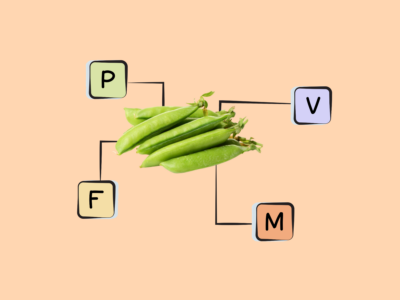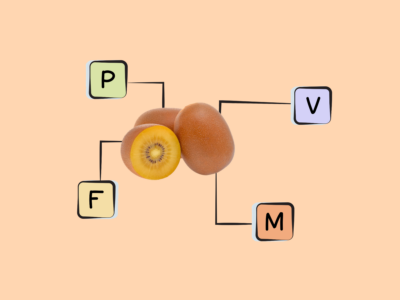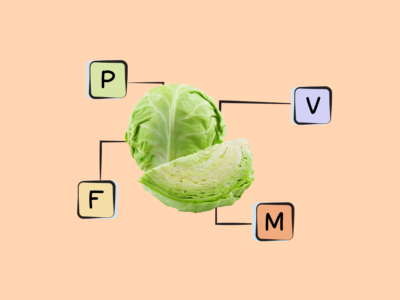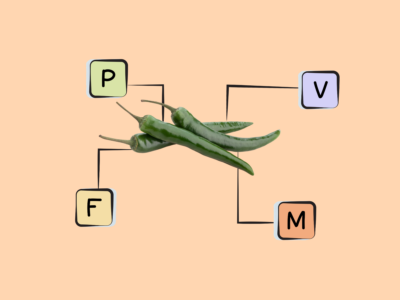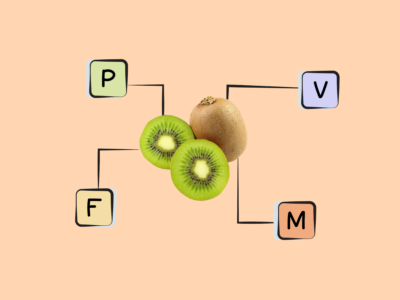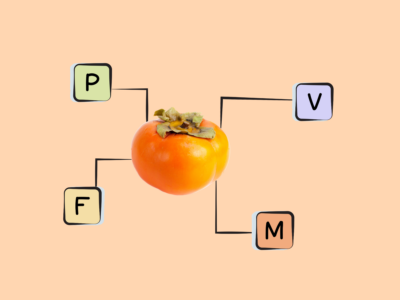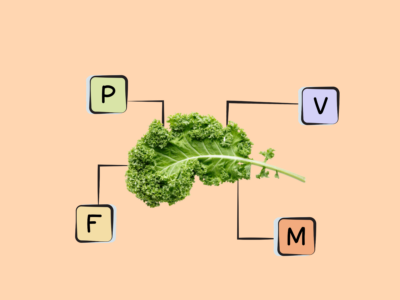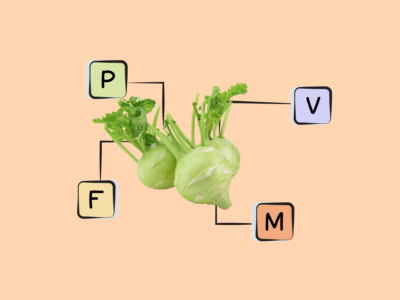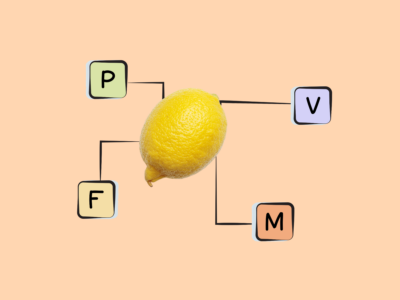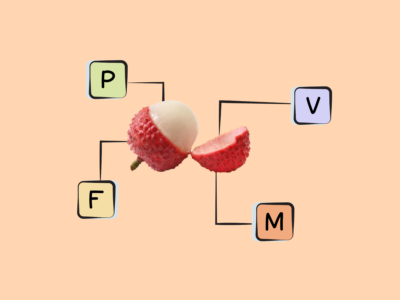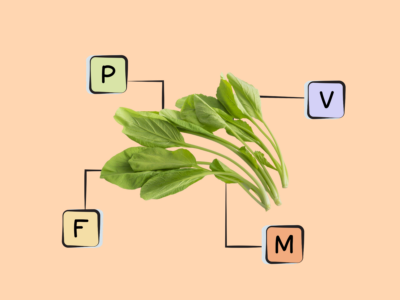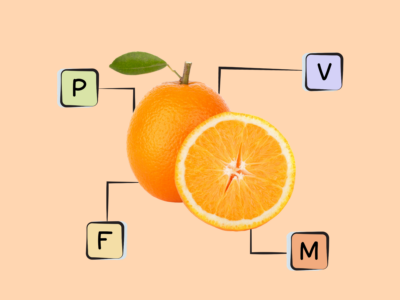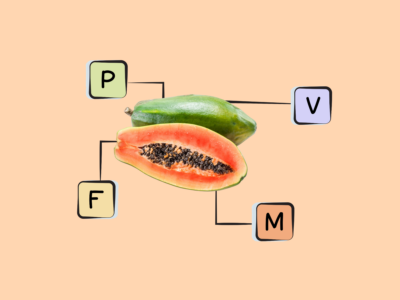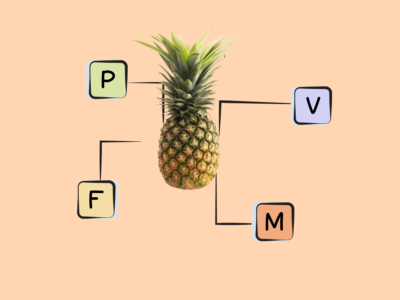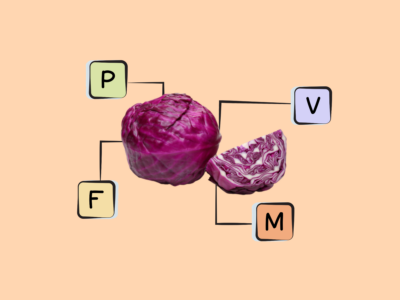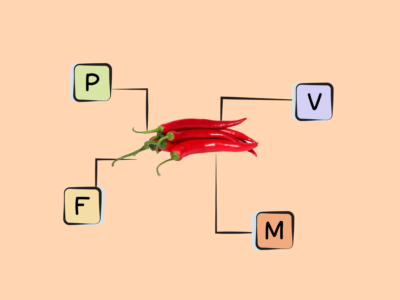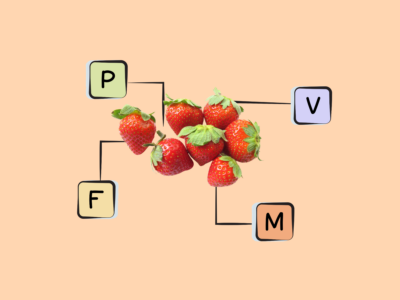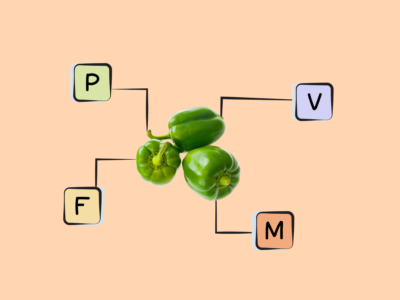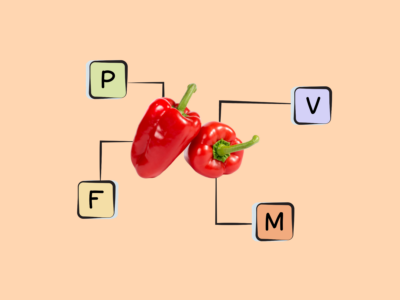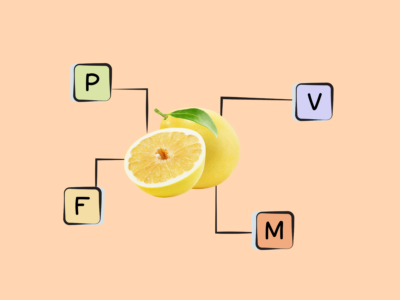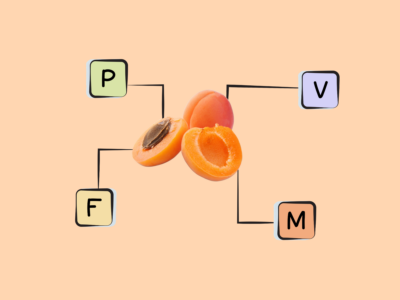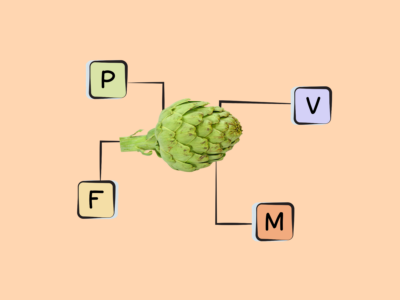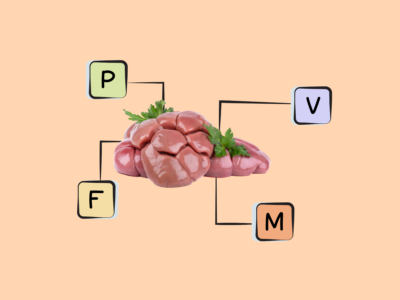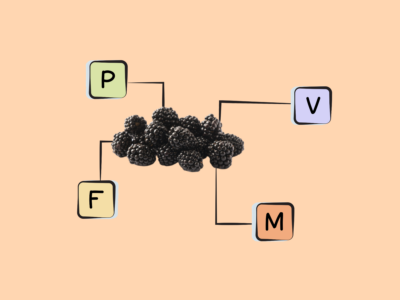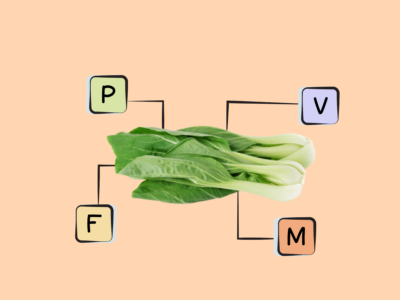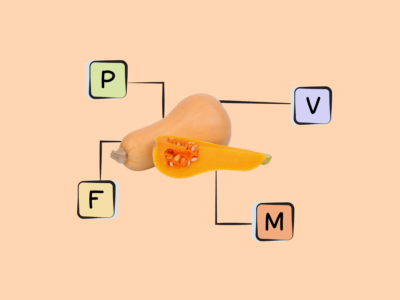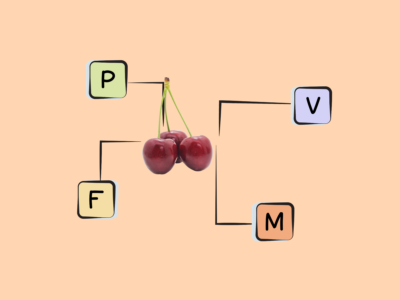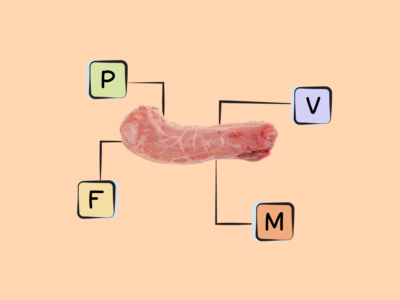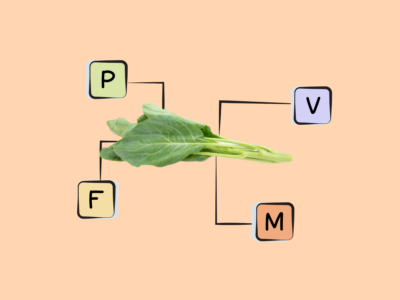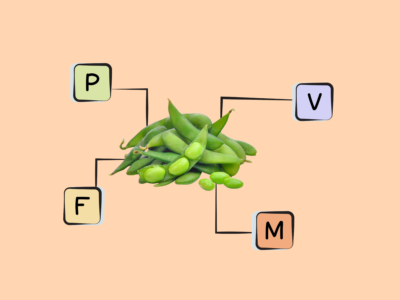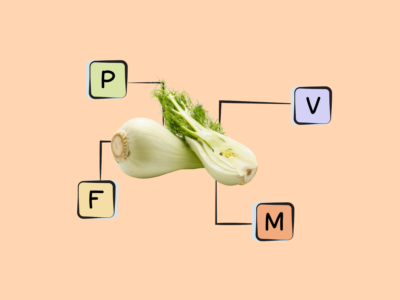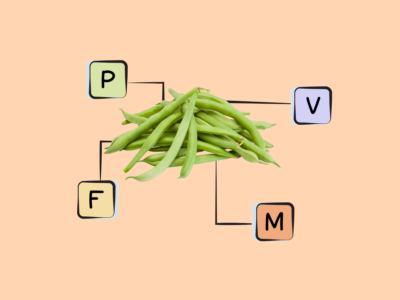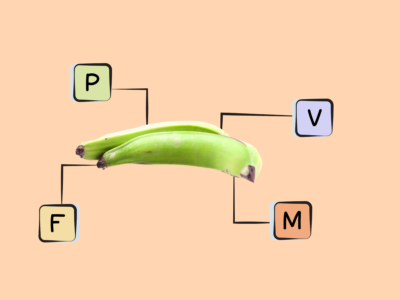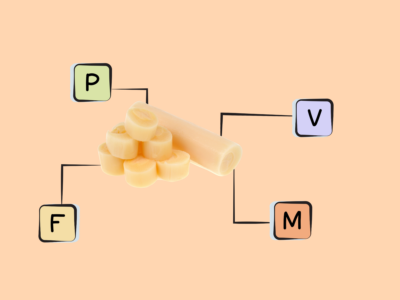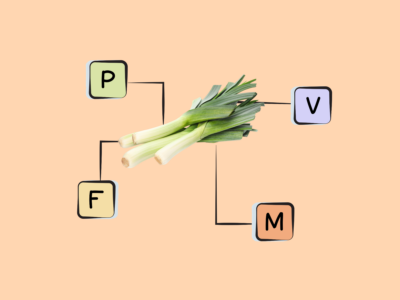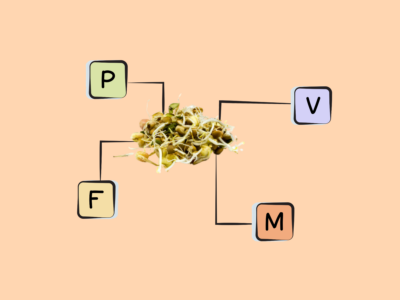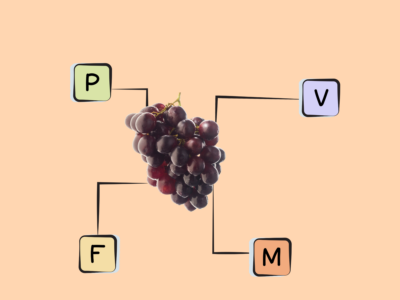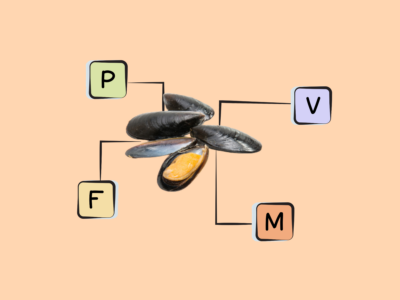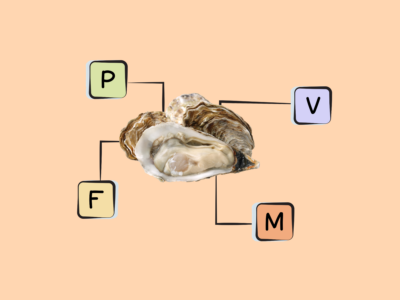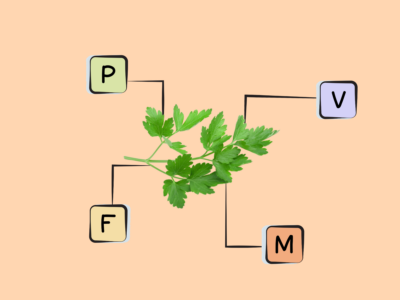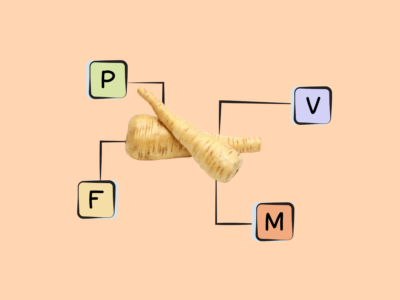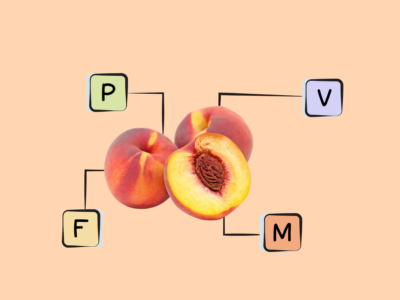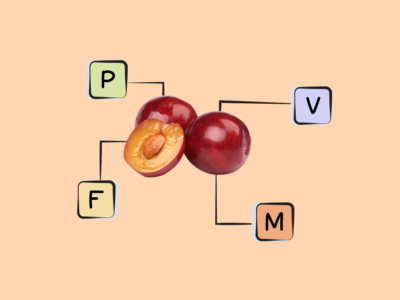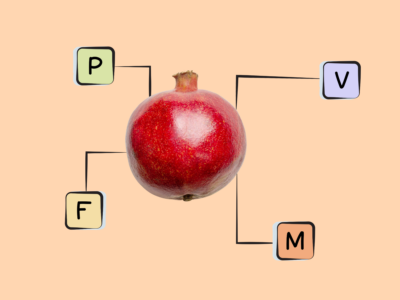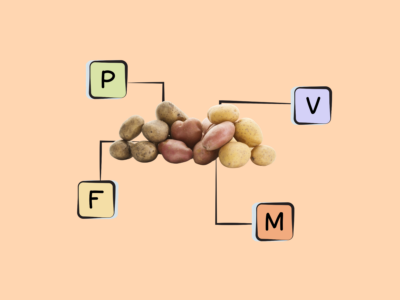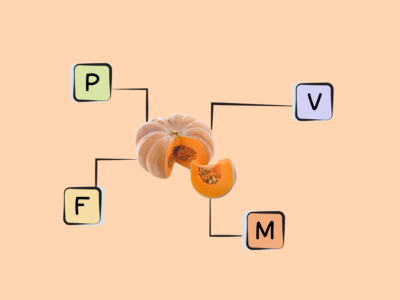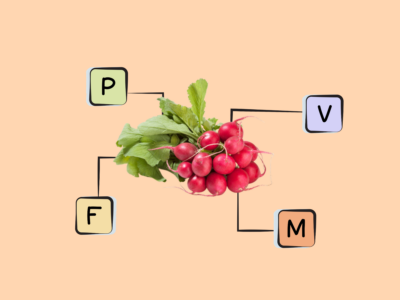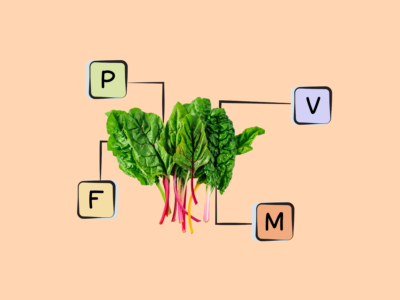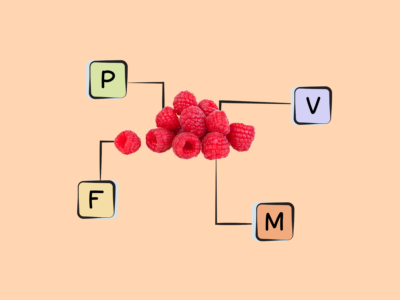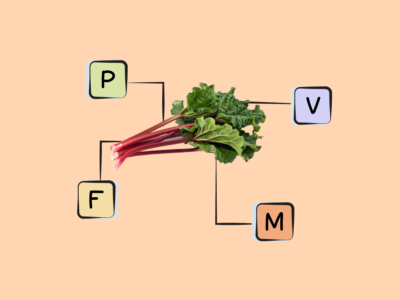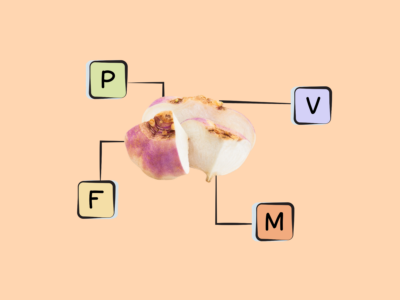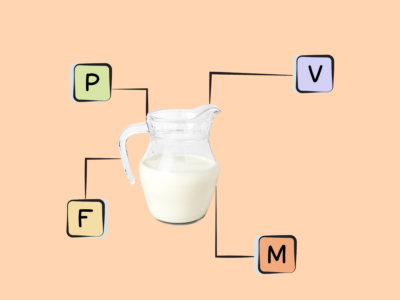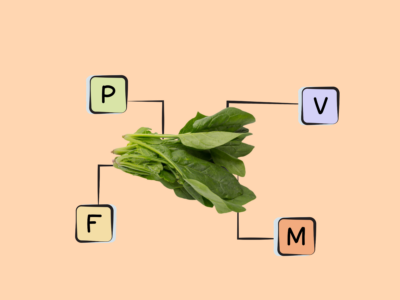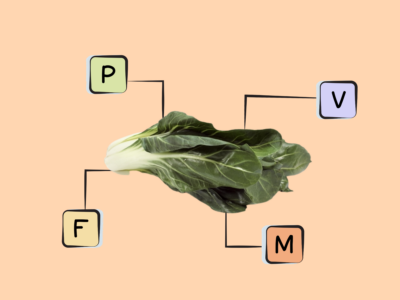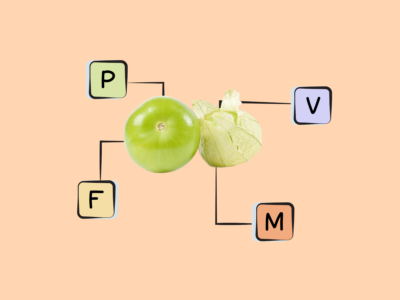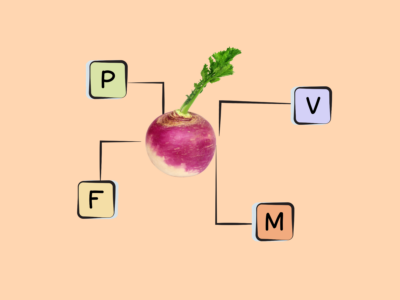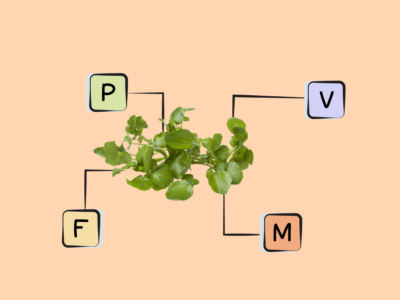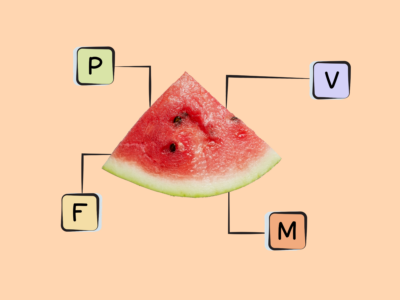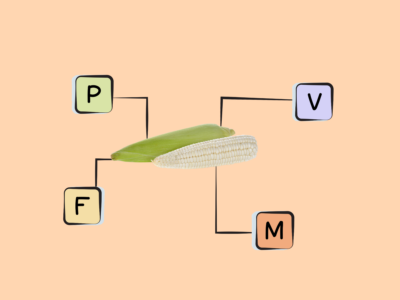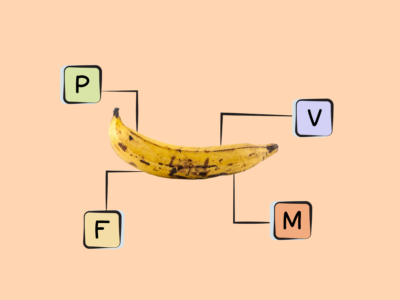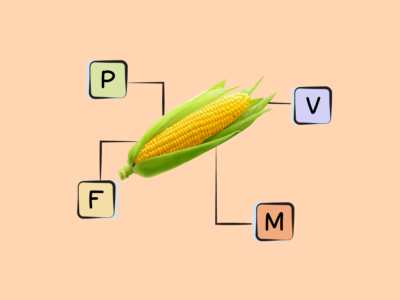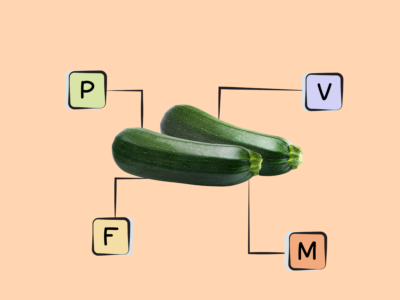Key Takeaways (expand)
- Vitamin C is an essential water-soluble vitamin.
- The primary biological roles of vitamin C are as an antioxidant and as an enzyme co-factor.
- Increasing vitamin C intake may reduce risk of cardiovascular disease, some types of cancer, type 2 diabetes, cataracts, age-related macular degeneration, gout, neurodegenerative diseases like Alzheimer’s disease and Parkinson’s, chronic kidney disease, and certain pregnancy complications.
- Vitamin C also plays helpful roles in male fertility, combatting certain forms of fatigue, bone health, and mental health conditions (especially those related to stress!).
- Vitamin C deficiency is called scurvy, which can be life-threatening.
- The recommended dietary allowance of vitamin C is 90 mg for adult males and 75 mg for adult females.
- The top food sources of vitamin C are: citrus fruits (oranges, grapefruit, lemons, limes), kiwis, berries, red peppers, guavas, papayas, broccoli, Brussels sprouts, tomatoes, cantaloupe, and leafy greens.
Table of Contents[Hide][Show]
How Does Vitamin C Affect Health and Disease?+−
- Vitamin C and Cardiovascular Disease
- Vitamin C and Immunity
- Vitamin C and Cancer
- Vitamin C and Diabetes
- Vitamin C and Eye Health
- Vitamin C and Neurodegenerative Disease
- Vitamin C and Mental Health
- Vitamin C and Gout
- Vitamin C and Fatigue
- Vitamin C and Pregnancy
- Vitamin C and Male Fertility
- Vitamin C and Chronic Kidney Disease
- Vitamin C and Bone Health
- Vitamin C and Dental Health
- Vitamin C and All-Cause Mortality
- What Are the Symptoms of Vitamin C Deficiency?
- How Much Vitamin C Do We Need?
- What Are the Best Food Sources of Vitamin C?
- What Are Good Food Sources of Vitamin C?
Vitamin C was first discovered in 1912, isolated in 1928, and became the first vitamin to be chemically produced in the year 1933. By 1934, it was being mass produced and sold as a dietary supplement under the brand name “Redoxon,” which is now owned by the company Bayer.
Although many animals can produce their own vitamin C from glucose in their kidneys or livers, humans (along with many other primates) lost the ability to do so approximately 61 million years ago. This was due to the inactivation of the gene that produces L-gulono-lactone oxidase (GLO), an enzyme that’s needed to complete the last step of vitamin C synthesis from glucose. Scientists still speculate about the exact reasons this gene became inactivated, but the leading theory is that the habitat of our ancestors was abundant in vitamin C-rich fruits, making it unnecessary to produce the vitamin internally. So, there was no selective pressure to preserve GLO gene function, and random disabling mutations of the GLO gene eventually displaced the functional copy as a result of genetic drift.
The foods with the highest vitamin C content include: citrus fruits (oranges, grapefruit, lemons, limes), kiwis, berries, red peppers, guavas, papayas, broccoli, Brussels sprouts, tomatoes, cantaloupe, and leafy greens. Some organ meats (adrenal glands in particular) are also good sources of vitamin C. Cooking can reduce vitamin C levels in foods, with boiling being the worst offender, due to this vitamin being both water-soluble and sensitive to heat; steaming and microwaving lead to the highest vitamin C retention. Prolonged storage, too, causes vitamin C levels in foods to diminish over time.
Want to know the top 25 foods for this awesome nutrient?

The Top 25 Foods for Every Nutrient
The Top 25 Foods for Every Nutrient e-book is a well-organized, easy-to-use, grocery store-friendly guide to help you choose foods that fit your needs of 43 important nutrients while creating a balanced nutrient-dense diet.
Get two “Top 25” food lists for each nutrient, plus you’ll find RDA charts for everyone, informative visuals, fun facts, serving sizes and the 58 foods that are Nutrient Super Stars!
Buy now for instant digital access.
What Are The Biological Roles of Vitamin C?
One of vitamin C’s most famous features is its potent antioxidant activity: it’s vital for the protection of many molecules in the body (including proteins, lipids, carbohydrates, and the nucleic acids RNA and DNA) against oxidative stress, i.e., damage generated by free radicals and reactive oxygen species. Vitamin C is also involved in recycling other antioxidants, such as vitamin E (which vitamin C helps regenerate from its oxidized form), making it supportive of antioxidant status even beyond its own direct activity.
Vitamin C is also an essential cofactor for a number of enzymes — particularly those involved in collagen biosynthesis, carnitine biosynthesis, neuropeptide production, tyrosine metabolism, histone demethylation, and DNA demethylation. So, vitamin C is essential for the biological functions that rely on these enzymes, including wound healing, energy production (particularly, the transport of long-chain fatty acids into mitochondria, which carnitine plays a critical role in), and the formation of neurotransmitters.
Vitamin C is involved in immunity through several avenues. In vitro, it’s been shown to stimulate the production and function of white blood cells such as lymphocytes, phagocytes, and neutrophils; these cells also accumulate high levels of vitamin C as protection against oxidative damage, which is particularly important for phagocytes, since one of their roles is to release reactive oxygen species to kill pathogens (and therefore they need vitamin C to protect against self-inflicted damage!). Additionally, vitamin C stimulates cellular motility, phagocytosis (the cellular ingestion of bacteria and other particles), and chemotaxis (the chemically-stimulated movement of cells towards more beneficial environments). And, vitamin C can enhance the capacity of neutrophils to kill microbes while also stimulating the proliferation and differentiation of T- and B-lymphocytes.
How Does Vitamin C Interact with Other Nutrients?
Lastly, vitamin C interacts with some other dietary nutrients. For example, vitamin C enhances the bioavailability of iron by increasing non-heme iron absorption in the intestines (non-heme iron comes from plant sources). Vitamin C may also help lower levels of lead in the body (for example, from exposure to cigarette smoke), possibly due to inhibiting intestinal absorption or enhancing lead excretion in the urine.
Ready to Make Healthy Eating Feel Effortless?
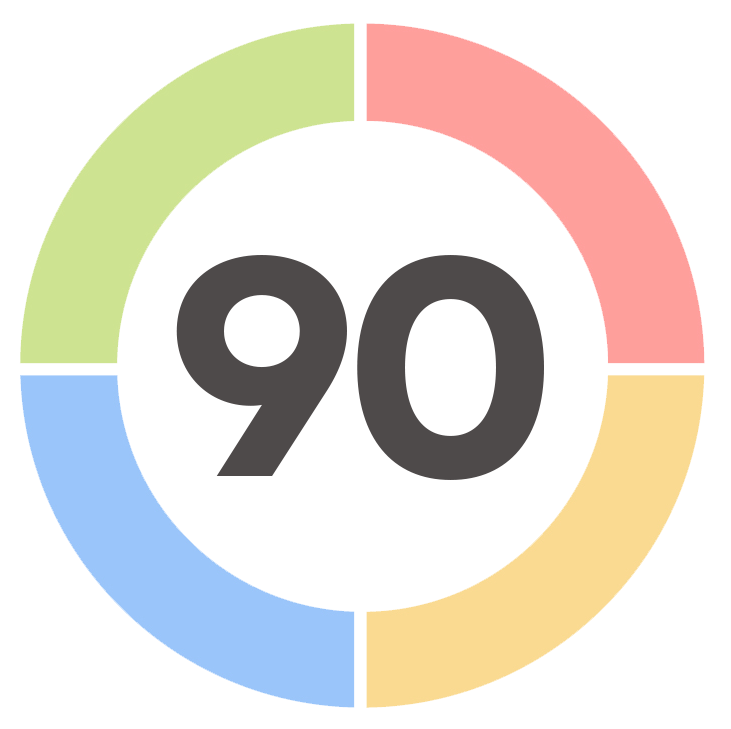
Join the FREE 90-day Nutrivore90 Challenge and build lasting habits with no food rules, no guilt—just real progress.
- Weekly downloads, journal prompts, and reflection tools—all completely free.
- Focus on nutrient density, not restriction
- Nutrivore90 starts January 5th, 2026!
How Does Vitamin C Affect Health and Disease?
Higher intakes of vitamin C are linked to reduced risk of heart disease, some forms of cancer, type 2 diabetes, cataracts, age-related macular degeneration, and gout. Vitamin C can also help regulate the stress response and reduce anxiety, and there’s preliminary evidence that it may also help prevent Alzheimer’s disease.
Vitamin C and Cardiovascular Disease
Across studies, higher vitamin C status (both dietary intake and blood levels) has been linked to a reduced risk of various cardiovascular diseases, as well as lower cardiovascular mortality!
For example, a 2019 systematic review and dose-response meta-analysis, encompassing over 320,000 participants from prospective cohort studies and interventional studies, found that vitamin C was significantly protective against cardiovascular disease mortality. Specifically, participants in the highest versus lowest categories of vitamin C intake had a 21% lower risk of death from cardiovascular disease, while participants in the highest versus lowest categories of serum vitamin C levels had a 40% lower risk!
Another systematic review and dose-response meta-analysis, this one from 2018 and including 69 prospective studies, likewise found that vitamin C was strongly cardio-protective. The dose-response analysis found that every 100 g increase of daily vitamin C intake was associated with a 12% lower risk of coronary heart disease, an 8% lower risk of stroke, and an 11% lower risk of cardiovascular disease. Similarly, every 50-μmol/L increase in blood concentrations of vitamin C was associated with a 26% lower risk of coronary heart disease, a 30% lower risk of stroke, and a 24% lower risk of cardiovascular disease!
Vitamin C may also be beneficial for heart failure patients. A large 2011 prospective study of over 20,000 adults found that every 20 μmol/L increase in plasma vitamin C was associated with a 9% lower risk of heart failure, even after adjusting for numerous confounders. Analyzed another way, participants in the highest versus lowest quartile of plasma vitamin C had a 38% lower risk of developing heart failure!
These cardiovascular benefits may be a result of vitamin C improving the function of endothelial cells, which are the cells that form our blood vessels (particularly with daily intake of vitamin C above 500 mg), reducing LDL “bad” cholesterol and triglyceride levels, reducing inflammation, and protecting LDL cholesterol from oxidation.
Some research has linked vitamin C to a reduced risk of atrial fibrillation—a type of irregular heartbeat that causes the upper chambers of the heart (the atria) to beat chaotically and out of sync with the lower chambers (the ventricles). A 2014 prospective study of nearly 20,000 adults found that among women, every 20 μmol/L increase in plasma vitamin C concentration (a proxy for dietary intake) was associated with a 13% reduction in risk of atrial fibrillation; however, no significant association showed up for men.
Likewise, a 2017 meta-analysis, encompassing eight randomized trials of patients undergoing heart surgery, likewise found that vitamin C reduced the risk of post-operative atrial fibrillation. Specifically, treatment with vitamin C reduced the risk of this condition by 53%!
Vitamin C and Immunity
Due to its role in the immune system, vitamin C can reduce the length and severity of the common cold, particularly if taken as a supplement before symptoms set in (although science doesn’t support the claim that it reduces the risk of getting sick in the first place).
A 2023 meta-analysis, encompassing 10 placebo-controlled trials of orally administered vitamin C, found that vitamin C of at least 1 g per day decreased the severity of the common cold by 15%. Likewise, compared to placebo, vitamin C supplementation significantly reduced the duration of severe cold symptoms (AKA symptoms that required missing school or work, and/or staying confined to the house)!
A 2013 systematic review and statistical analysis likewise found that supplementing with 1 – 5 g of vitamin C could protect against asthma caused by the common cold, both in normally asthmatic and non-asthmatic populations! In the three studies reviewed, one found that 1 g of vitamin C per day decreased the occurrence of infection-induced asthma attacks by 78%; one found that 5 g daily reduced the proportion of participants with bronchial hypersensitivity to histamine by 52%; and one found that a single dose of vitamin C (1 g) increased the provocative concentration of histamine among non-asthmatic patients who had the common cold. Although all three trials were small, the evidence here suggests that vitamin C could be helpful for people who experience asthma exacerbations when sick.
Vitamin C and Cancer
Evidence for the effects of vitamin C on cancer development or progression is mixed, but some studies suggest a protective effect of higher intakes for specific cancer types. A 2022 umbrella review of 3,562 articles found that when comparing highest versus lowest intakes of vitamin C, this nutrient was inversely associated with risk of breast cancer (11% lower risk), bladder cancer (16% lower risk), endometrial cancer (15% lower risk), cervical tumors (42% lower risk), esophageal cancer (42% lower risk), glioma (14% lower risk), lung cancer (17% lower risk), prostate cancer (11% lower risk), pancreatic cancer (30% lower risk), renal cell (kidney) cancer (22% lower risk), stomach cancer (34% lower risk), and total cancer occurrence (13% lower risk). Additionally, vitamin C intake was associated with better breast cancer prognosis—including recurrence (19% lower risk), cancer-specific mortality (12% lower risk), and all-cause mortality (18% lower risk).
Vitamin C may help protect against stomach cancer, in particular, due to vitamin C inhibiting carcinogenic N-nitroso compounds from forming in the stomach, as well as inactivating an enzyme called urease that the stomach-cancer-linked bacteria H. pylori uses for survival and colonization in the gastric mucosa.
A 2015 pooled analysis of 10 case-control studies likewise found a protective effect of vitamin C intake from food on cancers of the head and neck. Compared to participants in the lowest quintile of vitamin C intake, those in the fifth (highest) quintile had a 46% lower risk of oral and pharyngeal cancers, and a 48% lower risk of laryngeal cancer!
And while the research here is limited, some observational studies have shown an inverse relationship between vitamin C intake and non-Hodgkin’s lymphoma. A 2012 analysis of data from the Women’s Health Initiative, for example, found that total vitamin C intake was inversely associated with risk of diffuse large B-cell lymphoma; women in the highest versus lowest quartile of intake had a 31% lower risk.
Vitamin C delivered intravenously may also help reduce the side effects of chemotherapy and radiotherapy, as well as improve quality of life in cancer patients. In a 2011 multicenter study of breast cancer patients in Germany, intravenous vitamin C administered in the first postoperative year resulted in significantly fewer complaints from radiotherapy, chemotherapy, and the disease itself—including fatigue, nausea, loss of appetite, depression, dizsiness, sleep disorders, haemorrhagic diathesis.
Vitamin C and Diabetes
Some research also suggests that vitamin C could benefit type 2 diabetes, including improving metabolic parameters and decreasing the risk of other diseases associated with diabetes.
For example, a 2017 systematic review and meta-analysis of randomized controlled trials found that among type 2 diabetics, vitamin C interventions significantly reduced blood glucose concentrations (-0.44 mmol/L), especially in trials that lasted longer than 30 days. Vitamin C also significantly lowered fasting insulin (-13.63 pmol/L)!
A 2021 GRADE-assessed systematic review and meta-analysis, encompassing 28 studies of type 2 diabetics, likewise found moderate evidence certainty for vitamin C supplementation could improve systolic blood pressure in this population. Although lower certainty, there was also evidence that vitamin C could reduce HbA1c and diastolic blood pressure. In general, more studies and of longer duration would be needed to establish more evidence certainty!
An even more recent systematic review and meta-analysis, this one from 2023, included 22 randomized controlled trials of type 2 diabetics. This analysis found that vitamin C treatment resulted in a significant decrease in HbA1c, fasting insulin, and fasting blood glucose. A subgroup analysis found that when vitamin C was given as at least 1 g per day, it also significantly reduced HOMA-IR!
Vitamin C supplementation of at least 1 g per day was also shown beneficial in several other studies. In a 2022 systematic review of diabetic patients at increased risk of cardiovascular disease, vitamin C supplementation of 1 g daily, for durations of four weeks to 12 months, effectively lowered total cholesterol levels, reduced cardiovascular disease risk, reduced markers of inflammation and oxidative stress (including interleukin-6, C-reactive protein, and malondialdehyde), and improved endothelial function. Likewise, a 2007 randomized controlled trial found that 1 g of vitamin C consumed daily for six weeks significantly decreased diabetic patients’ fasting blood sugar, triglycerides, LDL cholesterol, HbA1c, and serum insulin, but 500 mg daily did not.
Vitamin C could even help reduce mortality among diabetics. A 2023 analysis of over 20,000 adults found that after a median follow-up of 17.3 years, participants with type 2 diabetes had significantly lower risk of mortality when their serum vitamin C levels were higher. In fact, serum vitamin C had a distinct linear inverse relationship with mortality risk! This pattern was not seen among non-diabetic participants, suggesting that in this study, the mortality-vitamin C link was modified by diabetes status.
When it comes to actually preventing type 2 diabetes in the first place, the evidence is mixed. A 2008 prospective study found a strong inverse relationship between blood levels of vitamin C and diabetes risk over the course of a 12-year followup, with participants in the top quintile seeing a 62% reduction in risk. Likewise, a 2016 cohort study of Chinese adults found that participants in the top third of vitamin C intake had a 24% lower risk of diabetes; even the middle third of intake had a 25% risk reduction compared to those consuming the least vitamin C! The findings suggested that this protective effect appeared at least partly due to vitamin C reducing oxidative stress and insulin resistance.
However, not all studies have confirmed this association. For example, a 2009 randomized controlled trial of women at high risk of cardiovascular disease found that 500 mg of vitamin C daily had no significant overall effects on diabetes risk over the course of 9.2 years. Likewise, a 2021 Mendelian randomization analysis (a method of determining causality through measured genetic variations) found no strong evidence to suggest that vitamin C supplementation could reduce diabetes risk. So, while the evidence points strongly to a benefit of vitamin C intake (especially higher levels) for people who already have type 2 diabetes, the science is less clear when it comes to prevention!
Notably, diabetics may have higher vitamin C requirements in general compared to the rest of the population. A 2023 analysis of NHANES and EPIC-Norfolk studies found that despite having similar dietary intakes, participants with type 2 diabetes had significantly lower vitamin C status than non-diabetics. In fact, compared to participants without diabetes, diabetic patients would need to consume 40 – 60% more vitamin C in order to obtain adequate circulating vitamin C status!
Vitamin C and Eye Health
Scientific studies also show that vitamin C can prevent or slow the development of cataracts. For example, a 2016 meta-analysis of 20 studies found that the highest versus lowest intake of vitamin C was associated with a 19% lower risk of cataracts, while the highest versus lowest blood levels of vitamin C was associated with a 30% lower risk.
Some evidence also suggests that vitamin C could help slow the progression of age-related macular degeneration, but most research on this topic has involved vitamin C in combination with other essential ocular health nutrients (such as vitamin A, vitamin E, selenium, zinc, anthocyanins, and carotenoids). For example, a 2023 systematic review of nearly 12,000 elderly adults found that people taking antioxidant supplements including vitamin C were 28% less likely to have progression to late age-related macular degeneration. More research is needed to assess the independent effects of vitamin C for this condition!
Vitamin C and Neurodegenerative Disease
Neurodegenerative diseases, too, could be impacted by vitamin C levels. A 2023 review encompassing 73 cohort studies and over 28,000 participants found that people with the highest (versus lowest) intake of dietary plus supplemental vitamin C had a 30% lower risk of developing Alzheimer’s disease. In addition, every 20 mg per day increase in either dietary or supplemental vitamin C intake reduced Alzheimer’s risk by 2%. Additionally, a 2022 analysis of 12 observational studies showed that Alzheimer’s patients have low levels of vitamin C relative to healthy controls.
Some studies have also found a protective association between vitamin C and Parkinson’s disease. A 2022 systematic review and dose-response meta-analysis, encompassing a total of 14 prospective cohort and case-control studies, found that every 50 mg per day increase in vitamin C intake was associated with a 6% reduction in Parkinson’s disease risk. And, a 2021 analysis of the Swedish National March Cohort, following nearly 44,000 adults for an average of 17.6 years, found that participants in the highest versus lowest tertile of vitamin C intake had a 32% lower risk of developing Parkinson’s disease.
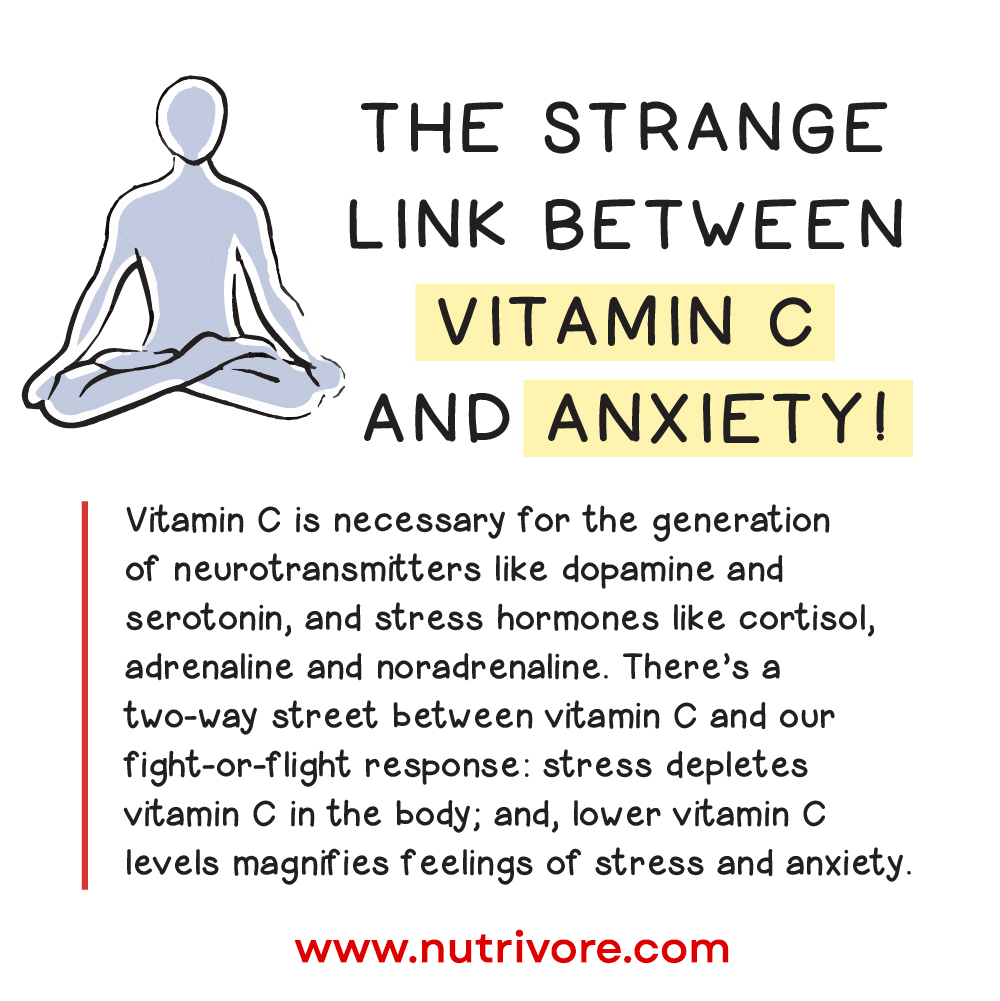
Vitamin C and Mental Health
Numerous studies on vitamin C have also shown its relationship with stress. Supplementation of vitamin C (ascorbic acid) in humans is associated with a decreased cortisol response after a psychological or physical stressor. In a randomized double-blind, placebo controlled 14-day trial, 120 healthy young adults were given sustained-release ascorbic acid (3 x 1000 mg/day Cetebe) or a placebo. After being subjected to acute psychological stress, consisting of public speaking and mental arithmetic, participants in the ascorbic acid group had lower blood pressure, subjective stress responses and faster salivary cortisol recovery.
A 2021 systematic review and meta-analysis of randomized controlled trials likewise found that in patients with subclinical depression, vitamin C had mood-elevating effects. Assessing 10 different trials, this analysis showed that vitamin C supplementation didn’t appear to have an effect on non-depressed participants, but did significantly improve mood scores in people who had depression but who hadn’t been prescribed antidepressants.
Furthermore, vitamin C deficiency is widely associated with stress-related diseases such as depression and anxiety! Several reports have suggested a relationship between behavior under stress and ascorbic acid. In a 2015 randomized, double-blind, placebo-controlled study in 42 high-school students, participants were given 500mg vitamin C daily or placebo for 14 days. Students receiving vitamin C showed a reduction in anxiety levels and heart rate. Vitamin C is also depleted by stress so if you don’t have enough and you’re using it up quickly you can see how low vitamin C levels will quickly become a “snowball of badness”. So, if you’re having a tough day, reach for foods high in vitamin C!
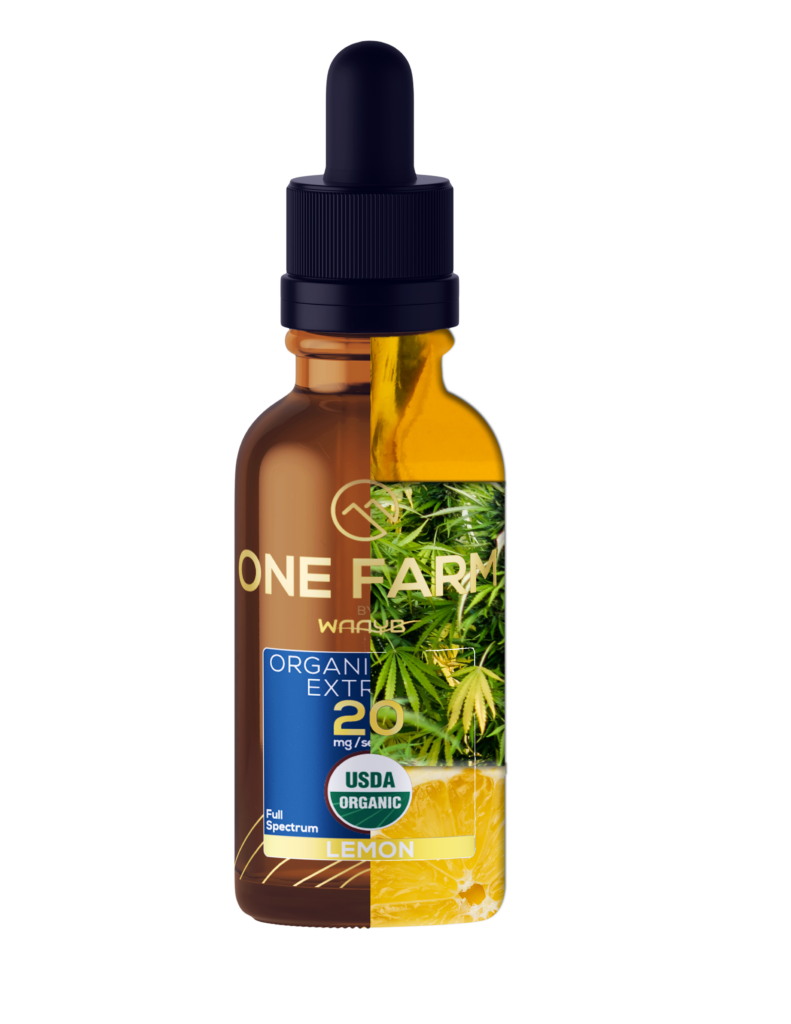
Stressed? CBD May Help
- Supports sleep, helps manage stress, reduces inflammation, reduces pain
- USDA Organic, 3rd-party tested, full-spectrum hemp extract
- Available in lemon, cinnamon, mint and unflavored, all with no harsh hemp aftertaste
- Talk to your doctor about whether CBD is right for you, and how much to take
Vitamin C and Gout
Vitamin C has also been inversely associated with uric acid levels and gout. A 2009 prospective study, following nearly 47,000 men for a period of 20 years, found that every 500-mg increase in total daily vitamin C intake was associated with a 17% lower risk of developing gout. Compared with daily vitamin C intakes below 250 mg, men consuming 1500 mg per day or more had a 45% lower risk of gout! The risk reduction for intakes of of 500 to 999 mg daily was 17%, and for intakes of 1000 to 1499 mg daily it was 34%. Similarly, a 2022 analysis of the Physicians’ Health Study II trial found that supplemental vitamin C (500 mg daily) reduced new gout diagnoses by 12% compared to placebo.
In addition, a 2021 meta-analysis of 16 controlled trials found that vitamin C supplementation had a significant ability to lower uric acid levels, the buildup of which causes gout. The uric acid-lowering effects of vitamin C was particularly strong in participants under the age of 65.
Vitamin C and Fatigue
Vitamin C has shown potential for helping treat fatigue associated with several different health conditions.
Some evidence also suggests vitamin C could be helpful for reducing post viral fatigue—a condition where feelings of tiredness and weakness persist after recovering from a viral infection. A 2021 systematic review of nine clinical studies found that in three out of four clinical trials, a vitamin C intervention led to significant decreases in fatigue scores compared to the control group; in four out of five observational or before-and-after studies, vitamin C resulted in a significant reduction in fatigue. More research is needed to assess the affects of oral vitamin C on this condition!
A 2013 randomized controlled trial of 20 obese adults found that adding vitamin C supplementation (500 mg daily for four weeks) to a calorie-restricted diet led to significant reductions in general fatigue scores, as well as lower ratings of perceived exertion during exercise, compared to an unsupplemented diet!
Vitamin C has also been tested for its effects on fatigue associated with shingles, with promising findings. A 2012 multi-center prospective cohort study found that two weeks of vitamin C administered intravenously to patients with symptomatic herpes zoster (AKA shingles) led to reductions in fatigue, as well as improved concentration! More research is needed to see whether dietary or supplemental vitamin C produces similar results.
Vitamin C and Pregnancy
Research suggests vitamin C may be helpful for protecting against some pregnancy complications. A 2015 review, encompassing 29 trials and 24,300 women, found that vitamin C supplementation during pregnancy was associated with a 36% lower risk of placental abruption—a condition where placenta separates from the wall of the uterus. Vitamin C supplementation also appeared protective against premature rupture of membranes (PROM), where the amniotic sac prematurely breaks before labor. Specifically, vitamin C supplementation was associated with a 34% lower risk of preterm PROM (occurring before the 37th week of gestation) and a 45% lower risk of term PROM (occurring after 37 weeks of gestation).
Likewise, vitamin C appears protective against gestational diabetes. A 2023 meta-analysis, encompassing 15 studies and a total of 10,131 participants, found that low vitamin C exposure during pregnancy (assessed by either dietary vitamin C intake or blood levels of vitamin C) was associated with a 272% higher risk of developing gestational diabetes. The risk increase was particularly strong when looking at vitamin C exposure during the second or third trimester.
Among women with type 1 diabetes, vitamin C has been associated with risk of complications during pregnancy. A 2017 cross-sectional study found that women with significantly low vitamin C levels (less than 23 μmol/L) late in pregnancy had a 2.4-fold increased risk of complications, compared to women with vitamin C levels above this amount.
Some studies also show that vitamin C during pregnancy could affect certain aspects of children’s health and development. Additionally, vitamin C may help offset some of the detrimental effects of smoking on offspring. A 2014 randomized controlled trial of 251 pregnant smokers found that compared to placebo, vitamin C supplementation (500 mg daily, taken from 13 to 23 weeks of gestation) led to improved pulmonary function among the participants’ newborns, as well as significantly reduced wheezing through one year of age. A 2022 follow-up of this study found that at age 5, the participants’ offspring still had significantly decreased wheeze and increased airway function compared to children born from the placebo group. A cohort study from 2018 also found that higher vitamin C intake during pregnancy was associated with increased fetal and infant growth up to six months of age; specifically, children born from mothers consuming at least 85 mg per day of vitamin C had significantly higher birth weights and lengths.
Vitamin C and Male Fertility
Vitamin C could also benefit male reproductive health, particularly semen parameters. A small 2006 study of men with infertility found that vitamin C supplementation (1000 mg twice daily, for up to two months) led to significant increases in sperm count, sperm motility, and sperm morphology. A 2015 randomized controlled trial likewise found that vitamin C supplementation (1000 mg consumed every other day, for a period of six months) significantly improved both sperm concentration and motility.
Vitamin C and Chronic Kidney Disease
Although research in humans is limited, some evidence suggests vitamin C could play a protective role in chronic kidney disease. A 2024 analysis of National Health and Nutrition Examination Survey (NHANES) data, comprising nearly 5000 people, found a protective association between blood levels of vitamin C and the risk of chronic kidney disease. Specifically, participants in the third quartile of serum vitamin C had a 37% lower risk of developing albuminuria, a 47% lower risk of low estimated glomerular filtration rate (eGFR), and a 46.6% lower risk of developing chronic kidney disease. For people between the ages of 65 and 80, vitamin C levels in both the third and fourth quartile groups were strongly associated with lower kidney disease risk, suggesting vitamin C may be particularly protective against this disease in the elderly.
Likewise, a 2016 analysis of the Tehran Lipid and Glucose Study, encompassing 1692 adults, found that those in the top quintile of vitamin C intake (as assessed by food frequency questionnaires) had a 62% lower risk of developing chronic kidney disease over the course of 3.6 years.
Vitamin C and Bone Health
Vitamin C may play a helpful role in bone health, including protecting against osteoporosis. A 2018 systematic review and meta-analysis found that higher vitamin C intake was associated with a 33% lower risk of osteoporosis, a 26% lower risk of hip fracture, and greater bone density in the femoral neck and lumbar spine.
A 2019 meta-analysis of 17 studies likewise found that dietary intake of vitamin C-oriented foods appeared strongly protective of bone health. People in the highest versus lowest category of vitamin-C rich food intake had a 34% lower risk of hip fracture, a 34% lower risk of osteoporosis, and greater bone mineral density at the lumbar spine and femoral neck!
Vitamin C and Dental Health
Given its famous role in scurvy (in particular, collagen production, and subsequently tooth support and structure), it might not come as a surprise that vitamin C plays a supportive role in dental health! A 2019 systematic review assessing a mixture of 14 cross-sectional studies, case-control studies, cohort studies, and randomized controlled trials found that both vitamin C intake and blood levels of vitamin C were inversely associated with periodontal disease in all included observational studies. Likewise, patients with lower vitamin C intake and/or lower blood levels had a greater progression of periodontal disease. over time And in the randomized controlled trials, vitamin C interventions were able to improve gum bleeding in patients with gingivitis!
Fascinatingly, vitamin C could also help protect against cavities! A 2020 study found that vitamin C is able to inhibit the growth and biofilm formation of Streptococcus mutans, a bacteria famous for causing dental caries.
Vitamin C and All-Cause Mortality
When measuring plasma vitamin C levels instead of estimating dietary intake (which can be faulty, due to poor recall on questionnaires), studies have found a strong protective effect of vitamin C on all-cause mortality. For example, in the 2001 EPIC-Norfolk prospective study, the relationship between plasma ascorbic acid levels and mortality was investigated in 19,496 men and women aged 45-79 over 4 years. Plasma ascorbic acid concentration was inversely related to mortality from all-causes, cardiovascular disease and ischemic heart disease. The risk of mortality in the top ascorbic acid quintile was about half the risk in the lowest quintile (52% decrease in men, 50% in women). Overall, a 20 micromole per liter rise in plasma concentration (equivalent to ~50 grams per day increase in fruit and vegetable intake) was associated with a 20% reduction in risk of all-cause mortality in the general population!
Didn’t know vitamin C was this amazing? Maybe your friends will enjoy this too!
What Are the Symptoms of Vitamin C Deficiency?
Severe vitamin C deficiency is known as scurvy — a potentially fatal disease in which collagen production is impaired and leads to the breakdown of tissues, resulting in symptoms like bleeding, poor wound healing, easy bruising, joint pain and swelling, and disintegration of the connective tissues in the gums (causing the characteristic bleeding gums but also eventually resulting in tooth loss!).
Interestingly, in the 1400s, long before vitamin C was even identified, its role in scurvy was inadvertently discovered when citrus fruits and other tropical fruits were found to heal sailors who became ill on long voyages. And in 1747, a Scottish doctor named James Lind conducted a trial of potential treatments for scurvy-riddled sailors, and found that oranges and lemons (which we now know have high vitamin C concentrations) were effective as treatments. (Fascinatingly, this was one of the first controlled clinical studies ever reported in the history of medicine!)
General symptoms of vitamin C deficiency are lethargy, weakness, irritability, weight loss, joint and muscle pain, slow wound healing, anemia, depression, connective tissue defects, impaired bone growth, gingivitis and bleeding gums, internal bleeding, and changes in hair appearance (particularly a coiling effect). These symptoms begin developing in a period of weeks or months (depending on baseline vitamin C levels) after vitamin C depletion. Beyond scurvy, there isn’t much consistent evidence that vitamin C deficiency increases the risk of chronic disease, even when higher intakes of it can be beneficial for a number of conditions.
Although vitamin C deficiency is usually a result of too little dietary intake, other factors can induce deficiency. For example, there’s some evidence that certain polymorphisms in genes needed for vitamin C transport can cause people to have genetically low levels of vitamin C, even if dietary intake is high. Health conditions and habits that inhibit vitamin C absorption — such as having kidney disease, or smoking and drinking alcohol — can also induce vitamin C deficiency. Vitamin C needs also increase as a result of hyperthyroidism, iron deficiency, surgery, burns, inflammation, fever, diarrhea, and cold or heat stress. Typical medical advice to address vitamin C deficiency is to supplement with ascorbate calcium twice daily, however it’s important to always talk to your doctor before taking any supplement.
How Much Vitamin C Do We Need?
Only 10 mg of vitamin C per day is necessary to prevent scurvy, but the recommended dietary allowance (RDA) of vitamin C for adult males and females is 90 mg and 75 mg, respectively — and the US Institute of Medicine estimates that smokers need an additional 35 mg of vitamin C per day (due to smoke inhalation increasing oxidative damage and depleting vitamin C more rapidly), and this may also apply to those exposed to secondhand smoke. But, these numbers should be thought of as a bare minimum for avoiding insufficiency symptoms: consuming levels of vitamin C beyond the RDA is associated with its preventative effects.
Up to 10 grams a day (that’s a tolerable upper intake level of 10,000 mg!) can be consumed by adults without concerns about toxicity or health detriments, though there is a recommendation to keep daily intake below 2000 mg to avoid gastrointestinal upset. (In some cases, dietary supplements that contain high doses of vitamin C can also cause headache, sleeping difficulties, skin flushing, and an increased risk of kidney stones, particularly in men.)
Worth noting, vitamin C reaches maximum absorption (100%) when ingested at doses up to 200 mg at a time. At doses beyond 500 mg, increasingly less vitamin C gets absorbed and instead is excreted in the urine. So, it’s smart to spread vitamin C intake throughout the day instead of eating all your vitamin-C-rich foods (or vitamin C supplements or a multivitamin with a high dose of vitamin C) in one sitting! Likewise, because vitamin C is a water-soluble vitamin, it doesn’t get stored internally; we need to ingest it regularly.
| 0 – 6 months | |||||
| 6 months to < 12 months | |||||
| 1 yr – 3 yrs | |||||
| 4 yrs – 8 yrs | |||||
| 9 yrs – 13 yrs | |||||
| 14 yrs – 18 yrs | |||||
| 19 yrs – 50 yrs | |||||
| 51+ yrs | |||||
| Pregnant (14 – 18 yrs) | |||||
| Pregnant (19 – 30 yrs) | |||||
| Pregnant (31 – 50 yrs) | |||||
| Lactating (14 – 18 yrs) | |||||
| Lactating (19 – 30 yrs) | |||||
| Lactating (31 – 50 yrs) |
Nutrient Daily Values
Nutrition requirements and recommended nutrient intake for infants, children, adolescents, adults, mature adults, and pregnant and lactating individuals.
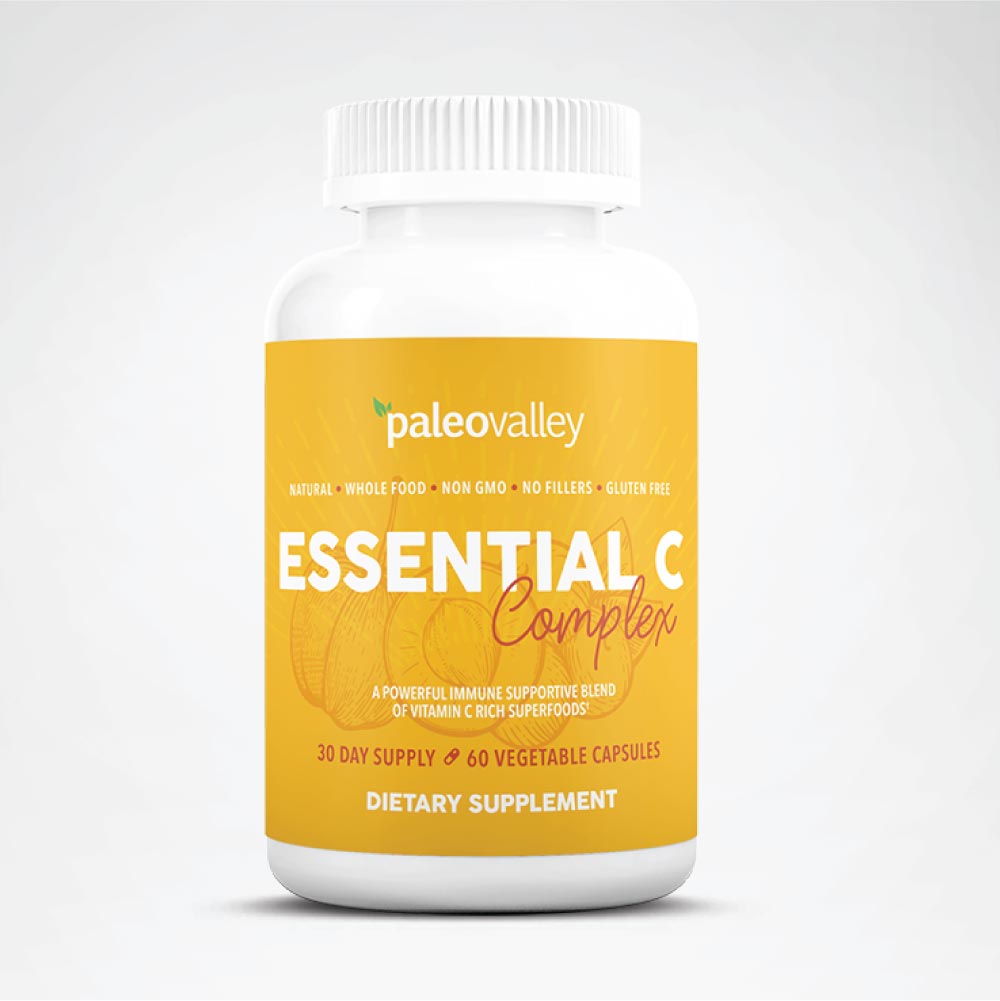
Need More Vitamin C?
- Made with all organic superfoods
- Nothing synthetic – no isolated ascorbic acid
- 100% pure – no fillers or flow agents
- Gluten free, grain free, soy free, dairy free, non GMO
- Save 15% off your order, no coupon code required!
What Are the Best Food Sources of Vitamin C?
The following foods have high concentrations of vitamin C, containing at least 50% of the recommended dietary allowance per serving, making them our best food sources of this valuable antioxidant vitamin!
Want to know the top 500 most nutrient-dense foods?
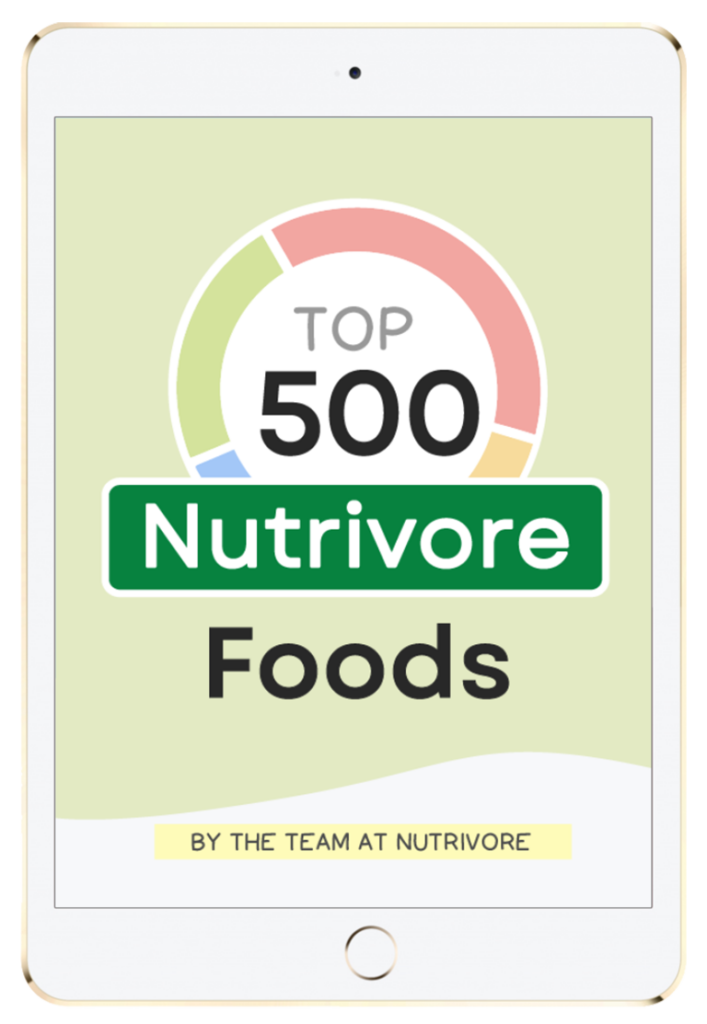
Top 500 Nutrivore Foods
The Top 500 Nutrivore Foods e-book is an amazing reference deck of the top 500 most nutrient-dense foods according to their Nutrivore Score. Think of it as the go-to resource for a super-nerd, to learn more and better understand which foods stand out, and why!
If you are looking for a quick-reference guide to help enhance your diet with nutrients, and dive into the details of your favorite foods, this book is your one-stop-shop!
Buy now for instant digital access.
What Are Good Food Sources of Vitamin C?
The following foods are also excellent or good sources of vitamin C, containing at least 10% (and up to 50%) of the daily value per serving.
Nutrivore Is a Game-Changer—This FREE Guide Shows You Why
Sign up for the free Nutrivore Newsletter, your weekly, science-backed guide to improving health through nutrient-rich foods — without dieting harder —and get the Beginner’s Guide to Nutrivore delivered straight to your inbox!

Citations
Expand to see all scientific references for this article.
Afkhami-Ardekani M, Shojaoddiny-Ardekani A. Effect of vitamin C on blood glucose, serum lipids & serum insulin in type 2 diabetes patients. Indian J Med Res. 2007 Nov;126(5):471-4.
Akmal M, Qadri JQ, Al-Waili NS, Thangal S, Haq A, Saloom KY. Improvement in human semen quality after oral supplementation of vitamin C. J Med Food. 2006 Fall;9(3):440-2. doi: 10.1089/jmf.2006.9.440.
Ashor AW, Lara J, Mathers JC, Siervo M. Effect of vitamin C on endothelial function in health and disease: a systematic review and meta-analysis of randomised controlled trials. Atherosclerosis. 2014 Jul;235(1):9-20. doi: 10.1016/j.atherosclerosis.2014.04.004.
Ashor AW, Werner AD, Lara J, Willis ND, Mathers JC, Siervo M. Effects of vitamin C supplementation on glycaemic control: a systematic review and meta-analysis of randomised controlled trials. Eur J Clin Nutr. 2017 Dec;71(12):1371-1380. doi: 10.1038/ejcn.2017.24.
Aune D, Keum N, Giovannucci E, Fadnes LT, Boffetta P, Greenwood DC, Tonstad S, Vatten LJ, Riboli E, Norat T. Dietary intake and blood concentrations of antioxidants and the risk of cardiovascular disease, total cancer, and all-cause mortality: a systematic review and dose-response meta-analysis of prospective studies. Am J Clin Nutr. 2018 Nov 1;108(5):1069-1091. doi: 10.1093/ajcn/nqy097.
Bernardo D, Martínez-Abad B, Vallejo-Diez S, Montalvillo E, Benito V, Anta B, Fernández-Salazar L, Blanco-Quirós A, Garrote JA, Arranz E. Ascorbate-dependent decrease of the mucosal immune inflammatory response to gliadin in coeliac disease patients. Allergol Immunopathol (Madr). 2012 Jan-Feb;40(1):3-8. doi: 10.1016/j.aller.2010.11.003.
Bowman GL. Ascorbic acid, cognitive function, and Alzheimer’s disease: a current review and future direction. Biofactors. 2012 Mar-Apr;38(2):114-22. doi: 10.1002/biof.1002.
Brody S, Preut R, Schommer K, Schürmeyer TH. A randomized controlled trial of high dose ascorbic acid for reduction of blood pressure, cortisol, and subjective responses to psychological stress. Psychopharmacology (Berl). 2002 Jan;159(3):319-24. doi: 10.1007/s00213-001-0929-6.
Carr AC, Frei B. Toward a new recommended dietary allowance for vitamin C based on antioxidant and health effects in humans. Am J Clin Nutr. 1999 Jun;69(6):1086-107. doi: 10.1093/ajcn/69.6.1086.
Carr AC, Lunt H, Wareham NJ, Myint PK. Estimating Vitamin C Intake Requirements in Diabetes Mellitus: Analysis of NHANES 2017-2018 and EPIC-Norfolk Cohorts. Antioxidants (Basel). 2023 Oct 15;12(10):1863. doi: 10.3390/antiox12101863.
Carr AC, Maggini S. Vitamin C and Immune Function. Nutrients. 2017 Nov 3;9(11):1211. doi: 10.3390/nu9111211.
Carr AC, Rosengrave PC, Bayer S, Chambers S, Mehrtens J, Shaw GM. Hypovitaminosis C and vitamin C deficiency in critically ill patients despite recommended enteral and parenteral intakes. Crit Care. 2017 Dec 11;21(1):300. doi: 10.1186/s13054-017-1891-y.
Chambial S, Dwivedi S, Shukla KK, John PJ, Sharma P. Vitamin C in disease prevention and cure: an overview. Indian J Clin Biochem. 2013 Oct;28(4):314-28. doi: 10.1007/s12291-013-0375-3.
Chen GC, Lu DB, Pang Z, Liu QF. Vitamin C intake, circulating vitamin C and risk of stroke: a meta-analysis of prospective studies. J Am Heart Assoc. 2013 Nov 27;2(6):e000329. doi: 10.1161/JAHA.113.000329.
Chen Q, Espey MG, Krishna MC, Mitchell JB, Corpe CP, Buettner GR, Shacter E, Levine M. Pharmacologic ascorbic acid concentrations selectively kill cancer cells: action as a pro-drug to deliver hydrogen peroxide to tissues. Proc Natl Acad Sci U S A. 2005 Sep 20;102(38):13604-9. doi: 10.1073/pnas.0506390102.
Chen Z, Huang Y, Cao D, Qiu S, Chen B, Li J, Bao Y, Wei Q, Han P, Liu L. Vitamin C Intake and Cancers: An Umbrella Review. Front Nutr. 2022 Jan 20;8:812394. doi: 10.3389/fnut.2021.812394.
Choi HK, Gao X, Curhan G. Vitamin C intake and the risk of gout in men: a prospective study. Arch Intern Med. 2009 Mar 9;169(5):502-7. doi: 10.1001/archinternmed.2008.606.
Collins BJ, Mukherjee MS, Miller MD, Delaney CL. Effect of Dietary or Supplemental Vitamin C Intake on Vitamin C Levels in Patients with and without Cardiovascular Disease: A Systematic Review. Nutrients. 2021 Jul 8;13(7):2330. doi: 10.3390/nu13072330.
Dawson EB, Evans DR, Harris WA, Teter MC, McGanity WJ. The effect of ascorbic acid supplementation on the blood lead levels of smokers. J Am Coll Nutr. 1999 Apr;18(2):166-70. doi: 10.1080/07315724.1999.10718845.
Edefonti V, Hashibe M, Parpinel M, Turati F, Serraino D, Matsuo K, Olshan AF, Zevallos JP, Winn DM, Moysich K, Zhang ZF, Morgenstern H, Levi F, Kelsey K, McClean M, Bosetti C, Galeone C, Schantz S, Yu GP, Boffetta P, Amy Lee YC, Chuang SC, La Vecchia C, Decarli A. Natural vitamin C intake and the risk of head and neck cancer: A pooled analysis in the International Head and Neck Cancer Epidemiology Consortium. Int J Cancer. 2015 Jul 15;137(2):448-62. doi: 10.1002/ijc.29388.
Evans JR, Lawrenson JG. Antioxidant vitamin and mineral supplements for slowing the progression of age-related macular degeneration. Cochrane Database Syst Rev. 2023 Sep 13;9(9):CD000254. doi: 10.1002/14651858.CD000254.pub5.
Eydou Z, Jad BN, Elsayed Z, Ismail A, Magaogao M, Hossain A. Investigation on the effect of vitamin C on growth & biofilm-forming potential of Streptococcus mutans isolated from patients with dental caries. BMC Microbiol. 2020 Jul 30;20(1):231. doi: 10.1186/s12866-020-01914-4.
Farhadnejad H, Asghari G, Mirmiran P, Yuzbashian E, Azizi F. Micronutrient Intakes and Incidence of Chronic Kidney Disease in Adults: Tehran Lipid and Glucose Study. Nutrients. 2016 Apr 20;8(4):217. doi: 10.3390/nu8040217.
Food and Nutrition Board, Institute of Medicine. Vitamin C. Dietary Reference Intakes for Vitamin C, Vitamin E, Selenium, and Carotenoids. Washington, D.C.: National Academy Press; 2000:95-185.
Frei B, Birlouez-Aragon I, Lykkesfeldt J. Authors’ perspective: What is the optimum intake of vitamin C in humans? Crit Rev Food Sci Nutr. 2012;52(9):815-29. doi: 10.1080/10408398.2011.649149.
Gao X, Curhan G, Forman JP, Ascherio A, Choi HK. Vitamin C intake and serum uric acid concentration in men. J Rheumatol. 2008 Sep;35(9):1853-8.
Gillani SW, Sulaiman SAS, Abdul MIM, Baig MR. Combined effect of metformin with ascorbic acid versus acetyl salicylic acid on diabetes-related cardiovascular complication; a 12-month single blind multicenter randomized control trial. Cardiovasc Diabetol. 2017 Aug 14;16(1):103. doi: 10.1186/s12933-017-0584-9.
Hamid M, Mansoor S, Amber S, Zahid S. A quantitative meta-analysis of vitamin C in the pathophysiology of Alzheimer’s disease. Front Aging Neurosci. 2022 Sep 7;14:970263. doi: 10.3389/fnagi.2022.970263.
Hansen SN, Tveden-Nyborg P, Lykkesfeldt J. Does vitamin C deficiency affect cognitive development and function? Nutrients. 2014 Sep 19;6(9):3818-46. doi: 10.3390/nu6093818.
Hantikainen E, Trolle Lagerros Y, Ye W, Serafini M, Adami HO, Bellocco R, Bonn S. Dietary Antioxidants and the Risk of Parkinson Disease: The Swedish National March Cohort. Neurology. 2021 Feb 9;96(6):e895-e903. doi: 10.1212/WNL.0000000000011373.
Harding AH, Wareham NJ, Bingham SA, Khaw K, Luben R, Welch A, Forouhi NG. Plasma vitamin C level, fruit and vegetable consumption, and the risk of new-onset type 2 diabetes mellitus: the European prospective investigation of cancer–Norfolk prospective study. Arch Intern Med. 2008 Jul 28;168(14):1493-9. doi: 10.1001/archinte.168.
Hemilä H. Vitamin C and common cold-induced asthma: a systematic review and statistical analysis. Allergy Asthma Clin Immunol. 2013 Nov 26;9(1):46. doi: 10.1186/1710-1492-9-46.
Hemilä H, Chalker E. Vitamin C reduces the severity of common colds: a meta-analysis. BMC Public Health. 2023 Dec 11;23(1):2468. doi: 10.1186/s12889-023-17229-8.
Hornung TC, Biesalski HK. Glut-1 explains the evolutionary advantage of the loss of endogenous vitamin C-synthesis: The electron transfer hypothesis. Evol Med Public Health. 2019 Aug 28;2019(1):221-231. doi: 10.1093/emph/eoz024.
Hu X, Yuan L, Wang H, Li C, Cai J, Hu Y, Ma C. Efficacy and safety of vitamin C for atrial fibrillation after cardiac surgery: A meta-analysis with trial sequential analysis of randomized controlled trials. Int J Surg. 2017 Jan;37:58-64. doi: 10.1016/j.ijsu.2016.12.009.
Huck CJ, Johnston CS, Beezhold BL, Swan PD. Vitamin C status and perception of effort during exercise in obese adults adhering to a calorie-reduced diet. Nutrition. 2013 Jan;29(1):42-5. doi: 10.1016/j.nut.2012.01.021.
Jang W, Kim H, Lee BE, Chang N. Maternal fruit and vegetable or vitamin C consumption during pregnancy is associated with fetal growth and infant growth up to 6 months: results from the Korean Mothers and Children’s Environmental Health (MOCEH) cohort study. Nutr J. 2018 Nov 12;17(1):105. doi: 10.1186/s12937-018-0410-6.
Jayedi A, Rashidy-Pour A, Parohan M, Zargar MS, Shab-Bidar S. Dietary and circulating vitamin C, vitamin E, β-carotene and risk of total cardiovascular mortality: a systematic review and dose-response meta-analysis of prospective observational studies. Public Health Nutr. 2019 Jul;22(10):1872-1887. doi: 10.1017/S1368980018003725.
Jenab M, Riboli E, Ferrari P, Sabate J, Slimani N, Norat T, Friesen M, Tjønneland A, Olsen A, Overvad K, Boutron-Ruault MC, Clavel-Chapelon F, Touvier M, Boeing H, Schulz M, Linseisen J, Nagel G, Trichopoulou A, Naska A, Oikonomou E, Krogh V, Panico S, Masala G, Sacerdote C, Tumino R, Peeters PH, Numans ME, Bueno-de-Mesquita HB, Büchner FL, Lund E, Pera G, Sanchez CN, Sánchez MJ, Arriola L, Barricarte A, Quirós JR, Hallmans G, Stenling R, Berglund G, Bingham S, Khaw KT, Key T, Allen N, Carneiro F, Mahlke U, Del Giudice G, Palli D, Kaaks R, Gonzalez CA. Plasma and dietary vitamin C levels and risk of gastric cancer in the European Prospective Investigation into Cancer and Nutrition (EPIC-EURGAST). Carcinogenesis. 2006 Nov;27(11):2250-7. doi: 10.1093/carcin/bgl096.
Juhl B, Lauszus FF, Lykkesfeldt J. Poor Vitamin C Status Late in Pregnancy Is Associated with Increased Risk of Complications in Type 1 Diabetic Women: A Cross-Sectional Study. Nutrients. 2017 Feb 23;9(3):186. doi: 10.3390/nu9030186.
Juraschek SP, Gaziano JM, Glynn RJ, Gomelskaya N, Bubes VY, Buring JE, Shmerling RH, Sesso HD. Effects of vitamin C supplementation on gout risk: results from the Physicians’ Health Study II trial. Am J Clin Nutr. 2022 Sep 2;116(3):812-819. doi: 10.1093/ajcn/nqac140.
Juraschek SP, Guallar E, Appel LJ, Miller ER 3rd. Effects of vitamin C supplementation on blood pressure: a meta-analysis of randomized controlled trials. Am J Clin Nutr. 2012 May;95(5):1079-88. doi: 10.3945/ajcn.111.027995.
Kabat GC, Kim MY, Wactawski-Wende J, Shikany JM, Vitolins MZ, Rohan TE. Intake of antioxidant nutrients and risk of non-Hodgkin’s Lymphoma in the Women’s Health Initiative. Nutr Cancer. 2012;64(2):245-54. doi: 10.1080/01635581.2012.642454.
Khaw KT, Bingham S, Welch A, Luben R, Wareham N, Oakes S, Day N. Relation between plasma ascorbic acid and mortality in men and women in EPIC-Norfolk prospective study: a prospective population study. European Prospective Investigation into Cancer and Nutrition. Lancet. 2001 Mar 3;357(9257):657-63. doi: 10.1016/s0140-6736(00)04128-3.
Knekt P, Ritz J, Pereira MA, O’Reilly EJ, Augustsson K, Fraser GE, Goldbourt U, Heitmann BL, Hallmans G, Liu S, Pietinen P, Spiegelman D, Stevens J, Virtamo J, Willett WC, Rimm EB, Ascherio A. Antioxidant vitamins and coronary heart disease risk: a pooled analysis of 9 cohorts. Am J Clin Nutr. 2004 Dec;80(6):1508-20. doi: 10.1093/ajcn/80.6.1508.
Kubota Y, Iso H, Date C, Kikuchi S, Watanabe Y, Wada Y, Inaba Y, Tamakoshi A; JACC Study Group. Dietary intakes of antioxidant vitamins and mortality from cardiovascular disease: the Japan Collaborative Cohort Study (JACC) study. Stroke. 2011 Jun;42(6):1665-72. doi: 10.1161/STROKEAHA.110.601526.
Levine M, Wang Y, Padayatty SJ, Morrow J. A new recommended dietary allowance of vitamin C for healthy young women. Proc Natl Acad Sci U S A. 2001 Aug 14;98(17):9842-6. doi: 10.1073/pnas.171318198.
Liu XX, Wang XX, Cui LL. Association between Oral vitamin C supplementation and serum uric acid: A meta-analysis of randomized controlled trials. Complement Ther Med. 2021 Aug;60:102761. doi: 10.1016/j.ctim.2021.102761.
Lykkesfeldt J, Christen S, Wallock LM, Chang HH, Jacob RA, Ames BN. Ascorbate is depleted by smoking and repleted by moderate supplementation: a study in male smokers and nonsmokers with matched dietary antioxidant intakes. Am J Clin Nutr. 2000 Feb;71(2):530-6. doi: 10.1093/ajcn/71.2.530.
Lykkesfeldt J, Poulsen HE. Is vitamin C supplementation beneficial? Lessons learned from randomised controlled trials. Br J Nutr. 2010 May;103(9):1251-9. doi: 10.1017/S0007114509993229.
Malmir H, Shab-Bidar S, Djafarian K. Vitamin C intake in relation to bone mineral density and risk of hip fracture and osteoporosis: a systematic review and meta-analysis of observational studies. Br J Nutr. 2018 Apr;119(8):847-858. doi: 10.1017/S0007114518000430.
Mason SA, Keske MA, Wadley GD. Effects of Vitamin C Supplementation on Glycemic Control and Cardiovascular Risk Factors in People With Type 2 Diabetes: A GRADE-Assessed Systematic Review and Meta-analysis of Randomized Controlled Trials. Diabetes Care. 2021 Feb;44(2):618-630. doi: 10.2337/dc20-1893.
McEvoy CT, Schilling D, Clay N, Jackson K, Go MD, Spitale P, Bunten C, Leiva M, Gonzales D, Hollister-Smith J, Durand M, Frei B, Buist AS, Peters D, Morris CD, Spindel ER. Vitamin C supplementation for pregnant smoking women and pulmonary function in their newborn infants: a randomized clinical trial. JAMA. 2014 May;311(20):2074-82. doi: 10.1001/jama.2014.5217.
McEvoy CT, Shorey-Kendrick LE, Milner K, Harris J, Vuylsteke B, Cunningham M, Tiller C, Stewart J, Schilling D, Brownsberger J, Titus H, MacDonald KD, Gonzales D, Vu A, Park BS, Spindel ER, Morris CD, Tepper RS. Effect of Vitamin C Supplementation for Pregnant Smokers on Offspring Airway Function and Wheeze at Age 5 Years: Follow-up of a Randomized Clinical Trial. JAMA Pediatr. 2023 Jan 1;177(1):16-24. doi: 10.1001/jamapediatrics.2022.4401. Erratum in: JAMA Pediatr. 2023 Jan 1;177(1):104.
Michels AJ, Frei B. Myths, artifacts, and fatal flaws: identifying limitations and opportunities in vitamin C research. Nutrients. 2013 Dec 16;5(12):5161-92. doi: 10.3390/nu5125161.
Michels KB, Holmberg L, Bergkvist L, Ljung H, Bruce A, Wolk A. Dietary antioxidant vitamins, retinol, and breast cancer incidence in a cohort of Swedish women. Int J Cancer. 2001 Feb 15;91(4):563-7. doi: 10.1002/1097-0215(200002)9999:9999<::aid-ijc1079>3.0.co;2-9.
Murererehe J, Uwitonze AM, Nikuze P, Patel J, Razzaque MS. Beneficial Effects of Vitamin C in Maintaining Optimal Oral Health. Front Nutr. 2022 Jan 10;8:805809. doi: 10.3389/fnut.2021.805809.
Myint PK, Luben RN, Wareham NJ, Khaw KT. Association between plasma vitamin C concentrations and blood pressure in the European prospective investigation into cancer-Norfolk population-based study. Hypertension. 2011 Sep;58(3):372-9. doi: 10.1161/HYPERTENSIONAHA.111.171108.
Myint PK, Luben RN, Welch AA, Bingham SA, Wareham NJ, Khaw KT. Plasma vitamin C concentrations predict risk of incident stroke over 10 y in 20 649 participants of the European Prospective Investigation into Cancer Norfolk prospective population study. Am J Clin Nutr. 2008 Jan;87(1):64-9. doi: 10.1093/ajcn/87.1.64.
Nosratabadi S, Ashtary-Larky D, Hosseini F, Namkhah Z, Mohammadi S, Salamat S, Nadery M, Yarmand S, Zamani M, Wong A, Asbaghi O. The effects of vitamin C supplementation on glycemic control in patients with type 2 diabetes: A systematic review and meta-analysis. Diabetes Metab Syndr. 2023 Aug;17(8):102824. doi: 10.1016/j.dsx.2023.102824.
de Oliveira IJ, de Souza VV, Motta V, Da-Silva SL. Effects of Oral Vitamin C Supplementation on Anxiety in Students: A Double-Blind, Randomized, Placebo-Controlled Trial. Pak J Biol Sci. 2015 Jan;18(1):11-8. doi: 10.3923/pjbs.2015.11.18.
Ou Y, Qiu Z, Geng T, Lu Q, Li R, Li L, Zhu K, Chen X, Lin X, Liu S, Pan A, Liu G. Associations of serum vitamin C concentrations with risk of all-cause and cause-specific mortality among individuals with and without type 2 diabetes. Eur J Nutr. 2023 Sep;62(6):2555-2565. doi: 10.1007/s00394-023-03173-1.
Pal J, Sanal MG, Gopal GJ. Vitamin-C as anti-Helicobacter pylori agent: More prophylactic than curative- Critical review. Indian J Pharmacol. 2011 Nov;43(6):624-7. doi: 10.4103/0253-7613.89814.
Pfister R, Michels G, Brägelmann J, Sharp SJ, Luben R, Wareham NJ, Khaw KT. Plasma vitamin C and risk of hospitalisation with diagnosis of atrial fibrillation in men and women in EPIC-Norfolk prospective study. Int J Cardiol. 2014 Dec 20;177(3):830-5. doi: 10.1016/j.ijcard.2014.11.016.
Pfister R, Sharp SJ, Luben R, Wareham NJ, Khaw KT. Plasma vitamin C predicts incident heart failure in men and women in European Prospective Investigation into Cancer and Nutrition-Norfolk prospective study. Am Heart J. 2011 Aug;162(2):246-53. doi: 10.1016/j.ahj.2011.05.007.
Rafiee B, Morowvat MH, Rahimi-Ghalati N. Comparing the Effectiveness of Dietary Vitamin C and Exercise Interventions on Fertility Parameters in Normal Obese Men. Urol J. 2016 Apr 16;13(2):2635-9.
Rumbold A, Ota E, Nagata C, Shahrook S, Crowther CA. Vitamin C supplementation in pregnancy. Cochrane Database Syst Rev. 2015 Sep 29;(9):CD004072. doi: 10.1002/14651858.CD004072.pub3.
Samsam Shariat SZ, Mostafavi SA, Khakpour F. Antioxidant effects of vitamins C and e on the low-density lipoprotein oxidation mediated by myeloperoxidase. Iran Biomed J. 2013;17(1):22-8. doi: 10.6091/ibj.1092.2012.
Schencking M, Vollbracht C, Weiss G, Lebert J, Biller A, Goyvaerts B, Kraft K. Intravenous vitamin C in the treatment of shingles: results of a multicenter prospective cohort study. Med Sci Monit. 2012 Apr;18(4):CR215-24. doi: 10.12659/msm.882621.
Song Y, Cook NR, Albert CM, Van Denburgh M, Manson JE. Effects of vitamins C and E and beta-carotene on the risk of type 2 diabetes in women at high risk of cardiovascular disease: a randomized controlled trial. Am J Clin Nutr. 2009 Aug;90(2):429-37. doi: 10.3945/ajcn.2009.27491.
Stamp LK, O’Donnell JL, Frampton C, Drake JM, Zhang M, Chapman PT. Clinically insignificant effect of supplemental vitamin C on serum urate in patients with gout: a pilot randomized controlled trial. Arthritis Rheum. 2013 Jun;65(6):1636-42. doi: 10.1002/art.37925.
Tada A, Miura H. The Relationship between Vitamin C and Periodontal Diseases: A Systematic Review. Int J Environ Res Public Health. 2019 Jul 11;16(14):2472. doi: 10.3390/ijerph16142472.
Talebi S, Ghoreishy SM, Jayedi A, Travica N, Mohammadi H. Dietary Antioxidants and Risk of Parkinson’s Disease: A Systematic Review and Dose-Response Meta-analysis of Observational Studies. Adv Nutr. 2022 Oct 2;13(5):1493-1504. doi: 10.1093/advances/nmac001.
Tsugane S, Sasazuki S. Diet and the risk of gastric cancer: review of epidemiological evidence. Gastric Cancer. 2007;10(2):75-83. doi: 10.1007/s10120-007-0420-0.
Vollbracht C, Kraft K. Feasibility of Vitamin C in the Treatment of Post Viral Fatigue with Focus on Long COVID, Based on a Systematic Review of IV Vitamin C on Fatigue. Nutrients. 2021 Mar 31;13(4):1154. doi: 10.3390/nu13041154.
Vollbracht C, Schneider B, Leendert V, Weiss G, Auerbach L, Beuth J. Intravenous vitamin C administration improves quality of life in breast cancer patients during chemo-/radiotherapy and aftercare: results of a retrospective, multicentre, epidemiological cohort study in Germany. In Vivo. 2011 Nov-Dec;25(6):983-90.
Wang C, Zhao J, Zhou Q, Li J. Serum vitamin C levels and their correlation with chronic kidney disease in adults: a nationwide study. Ren Fail. 2024 Dec;46(1):2298079. doi: 10.1080/0886022X.2023.2298079.
Wei L, Liang G, Cai C, Lv J. Association of vitamin C with the risk of age-related cataract: a meta-analysis. Acta Ophthalmol. 2016 May;94(3):e170-6. doi: 10.1111/aos.12688.
Yokoyama T, Date C, Kokubo Y, Yoshiike N, Matsumura Y, Tanaka H. Serum vitamin C concentration was inversely associated with subsequent 20-year incidence of stroke in a Japanese rural community. The Shibata study. Stroke. 2000 Oct;31(10):2287-94. doi: 10.1161/01.str.31.10.2287.
Yosaee S, Keshtkaran Z, Abdollahi S, Shidfar F, Sarris J, Soltani S. The effect of vitamin C supplementation on mood status in adults: a systematic review and meta-analysis of randomized controlled clinical trials. Gen Hosp Psychiatry. 2021 Jul-Aug;71:36-42. doi: 10.1016/j.genhosppsych.2021.04.006.
Young JI, Züchner S, Wang G. Regulation of the Epigenome by Vitamin C. Annu Rev Nutr. 2015;35:545-64. doi: 10.1146/annurev-nutr-071714-034228.
Zhang S, Hunter DJ, Forman MR, Rosner BA, Speizer FE, Colditz GA, Manson JE, Hankinson SE, Willett WC. Dietary carotenoids and vitamins A, C, and E and risk of breast cancer. J Natl Cancer Inst. 1999 Mar 17;91(6):547-56. doi: 10.1093/jnci/91.6.547.
Zeng LF, Luo MH, Liang GH, Yang WY, Xiao X, Wei X, Yu J, Guo D, Chen HY, Pan JK, Huang HT, Liu Q, Guan ZT, Han YH, Zhao D, Zhao JL, Hou SR, Wu M, Lin JT, Li JH, Liang WX, Ou AH, Wang Q, Li ZP, Liu J. Can Dietary Intake of Vitamin C-Oriented Foods Reduce the Risk of Osteoporosis, Fracture, and BMD Loss? Systematic Review With Meta-Analyses of Recent Studies. Front Endocrinol (Lausanne). 2020 Feb 3;10:844. doi: 10.3389/fendo.2019.00844.
Zheng JS, Luan J, Sofianopoulou E, Imamura F, Stewart ID, Day FR, Pietzner M, Wheeler E, Lotta LA, Gundersen TE, Amiano P, Ardanaz E, Chirlaque MD, Fagherazzi G, Franks PW, Kaaks R, Laouali N, Mancini FR, Nilsson PM, Onland-Moret NC, Olsen A, Overvad K, Panico S, Palli D, Ricceri F, Rolandsson O, Spijkerman AMW, Sánchez MJ, Schulze MB, Sala N, Sieri S, Tjønneland A, Tumino R, van der Schouw YT, Weiderpass E, Riboli E, Danesh J, Butterworth AS, Sharp SJ, Langenberg C, Forouhi NG, Wareham NJ. Plasma Vitamin C and Type 2 Diabetes: Genome-Wide Association Study and Mendelian Randomization Analysis in European Populations. Diabetes Care. 2021 Jan;44(1):98-106. doi: 10.2337/dc20-1328.
Zheng JS, Rautiainen S, Lindblad BE, Morgenstern R, Wolk A. High-dose supplements of vitamins C and E, low-dose multivitamins, and the risk of age-related cataract: a population-based prospective cohort study of men. Am J Epidemiol. 2013 Mar 15;177(6):548-55. doi: 10.1093/aje/kws279.
Zhou F, Xie X, Zhang H, Liu T. Effect of antioxidant intake patterns on risks of dementia and cognitive decline. Eur Geriatr Med. 2023 Feb;14(1):9-17. doi: 10.1007/s41999-022-00720-7.
Zhou L, Liu J, Zhou M. A comprehensive meta-analysis on the association between vitamin C intake and gestational diabetes mellitus: Insights and novel perspectives. Medicine (Baltimore). 2023 Aug 11;102(32):e34740. doi: 10.1097/MD.0000000000034740.
Zhou C, Na L, Shan R, Cheng Y, Li Y, Wu X, Sun C. Dietary Vitamin C Intake Reduces the Risk of Type 2 Diabetes in Chinese Adults: HOMA-IR and T-AOC as Potential Mediators. PLoS One. 2016 Sep 29;11(9):e0163571. doi: 10.1371/journal.pone.0163571.



